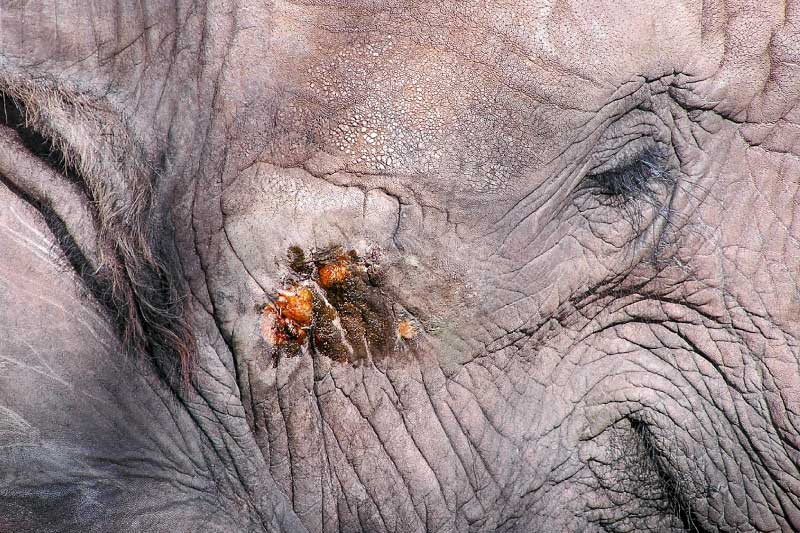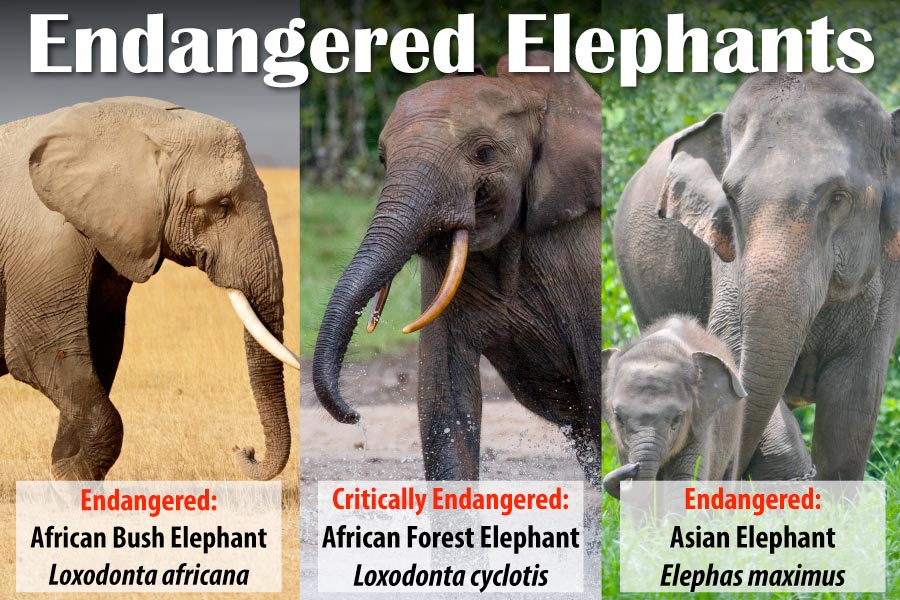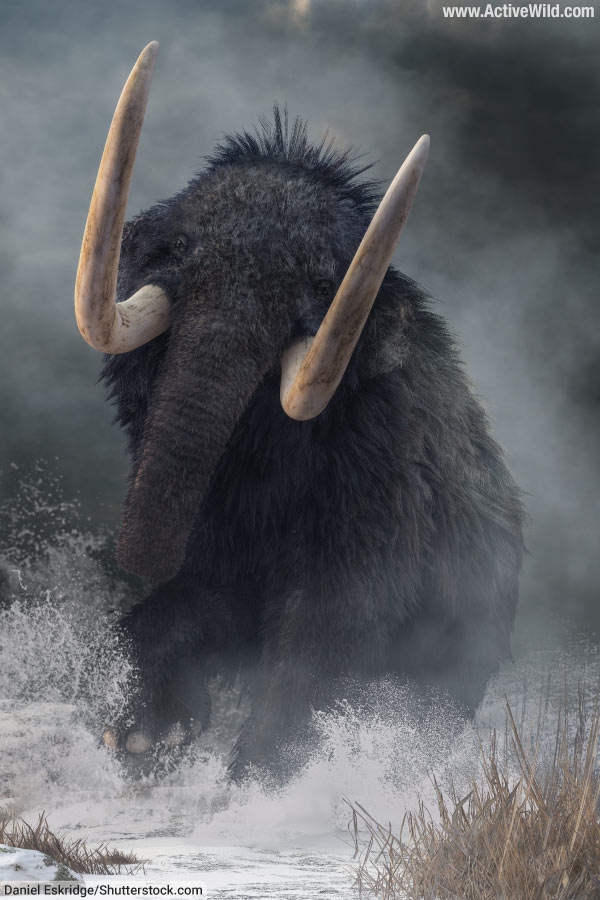Recent research has found that, like living elephants, male wooly mammoths experienced episodes of increased testosterone levels known as musth.
An elephant in musth can become highly aggressive and potentially dangerous to humans and other animals.
By analyzing steroid hormone concentrations in African elephant tusks, scientists have been able to identify when an elephant was in musth.
By using the same methods to analyze woolly mammoth tusks, the scientists found that, like their living relatives, male mammoths also periodically experienced these periods of heightened testosterone.
The study demonstrated that hormone records in teeth (an elephant's tusks are elongated incisor teeth) could potentially be used in other fields of scientific research.
(The original paper can be read here.)
- You can find out more about the wooly mammoth on this page: Wooly Mammoth Facts
- You can see more prehistoric animals on this page: Prehistoric Animals
- Find out more about elephants on this page: Elephant Facts
What is musth?

Musth is a periodic physiological and behavioral change experienced by adult male elephants, characterized by a significant increase in testosterone levels, aggressive behavior, and a distinctive, pungent odor.
Typically lasting between two and three months, musth is marked by the secretion of a thick, tar-like substance called temporin from the temporal glands located on the sides of the elephant's head.
Musth serves a vital role in elephant social dynamics, as it signals readiness to mate and enhances the male's chances of securing a mate by demonstrating physical and hormonal strength.
During musth, male elephants can become highly unpredictable and dangerous, engaging in violent confrontations with rival males, as well as posing a potential threat to humans and other animals in their vicinity.
Do all elephant species experience musth?

Males of all three living elephant species (African bush elephant Loxodonta africana, African forest elephant Loxodonta cyclotis, and Asian elephant Elephas maximus) experience episodes of musth.
Although the exact duration and intensity of musth may vary between individual elephants, the core characteristics of increased testosterone levels, aggressive behavior, and secretion of temporin from the temporal glands remain consistent across the species.
How are mammoths related to elephants?
Mammoths are closely related to elephants – both groups belong to the same family, Elephantidae, which is part of the order Proboscidea.
Mastodons, another extinct group of elephant-like animals, are less closely-related to living elephants, and belong to a separate family, Mammutidae. Like elephants and mammoths, however, mastodons belong to the order Proboscidea.
Mammoths were similar in size and shape to modern elephants but were adapted to live in cold environments, with long, shaggy hair, a hump of fat on their backs, and long, curved tusks.
The best-known mammoth species is the Woolly Mammoth (Mammuthus primigenius), which inhabited vast regions of the Northern Hemisphere during the last ice age.

Mammoths went extinct around 4,000 years ago, likely due to a combination of natural climate change, competition with other species and hunting by humans.
Despite their extinction, mammoths remain a fascinating point of study for scientists, who have extracted and analyzed DNA from well-preserved specimens preserved in ice, providing insights into their evolutionary history and relationship to modern elephants.
Which living species of elephant are most closely related to mammoths?
Mammoths are more closely related to the Asian elephant than they are to either the African bush elephant or the African forest elephant.
The divergence between the Asian elephant and the mammoth lineage is estimated to have occurred around 6 million years ago, while the African elephant lineage separated from their shared common ancestor around 7.6 million years ago.
Despite the closer evolutionary relationship between mammoths and Asian elephants, all three lineages are part of the Elephantidae family, and share many similarities in terms of morphology, behavior, and social structure.
As the recent research has shown, male mammoths, like living male elephants, also experienced periods of musth.
Discover More With Active Wild
- You can find out more about the wooly mammoth on this page: Wooly Mammoth Facts
- You can see more prehistoric animals on this page: Prehistoric Animals
- Find out more about elephants on this page: Elephant Facts


